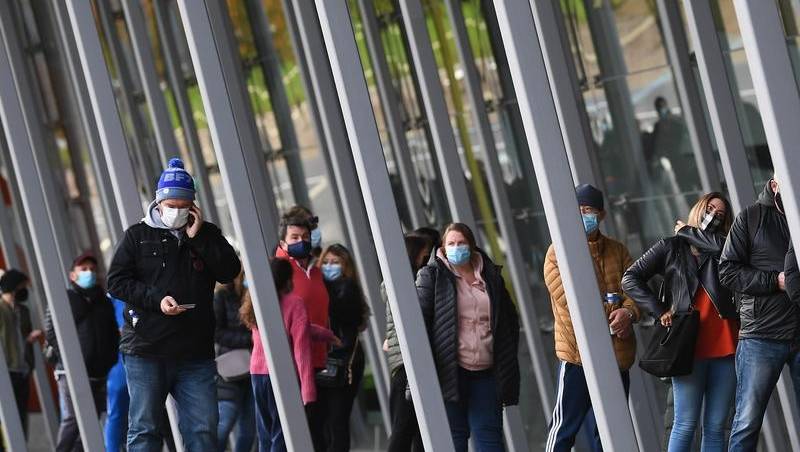
Victoria has recorded five new local COVID-19 infections, bringing the state’s outbreak to 70 cases.
Three of the five are direct primary close contacts of existing cases and have been in quarantine for their entire infectious period.
The remaining two are “unlinked” to any known cases and were infectious in the community.
One of the mystery cases had been a regular visitor to Craigieburn Central shopping centre and came forward as a result of efforts to test heavily in the area.
That person’s partner is the other unlinked case and is a construction worker.
That’s prompted the closure of a Melbourne building site, affecting 170 workers now considered primary close contacts.
“Seven positive cases entered the Craigieburn shopping centre on different days and contact tracers are working to ascertain the man’s exact movements to see if they overlap with any of them,” testing commander Jeroen Weimar said.
Three of the five new cases linked to primary close contacts include two connected to the families with the Delta virus strain, bringing that cluster to nine.
A child of one of the families has tested positive, as well as an adult family friend.
The presence of this strain, which has caused devastation in the UK and India, is of concern to authorities because it is unknown how the family contracted it.
A third primary close contact shares a house with a worker from the Maidstone Arcare aged care cluster.
Professor Sharon Lewin from Victoria’s genomic sequencing centre said there was no evidence pointing to the Victorian family picking up the virus while on holiday in NSW, and her “strong hypothesis” was that it had come into the state via hotel quarantine.
“Every effort is being made right now to look for that match but we may not get the match,” she said.
She said both the Delta and Kappa strains of the virus – the latter makes up the bulk of the Victorian outbreak – are about 50 per cent more infectious than previous strains.
The family who contracted the Delta strain has more than 300 close contacts, many at North Melbourne Primary School, and authorities suspect there has been transmission between two grade five students.
Some of the close contacts live in public housing towers, which saw dozens of cases during Melbourne’s second lockdown.
The city is now in its second week of strict lockdown, with Health Minister Martin Foley non-committal about planned easing of restrictions on June 10.
There are now 366 sites where virus exposure may have occurred and can be viewed at coronavirus.vic.gov.au/exposure-sites.
Six hundred primary close contacts were due to finish quarantine on Saturday after returning negative tests and around 150 exposure sites will be deleted in coming days.
Chief Health Officer Brett Sutton says the Delta variant has “very high transmission potential” and there are anecdotal reports it causes more severe illness in children.
However Professor Lewin said there was no conclusive evidence of this.
Half a million Victorians have been tested since the beginning of the outbreak, 36,362 of them on Friday.
The Victorian vaccine rollout is ramping up with an extra 100,000 Pfizer doses on the way.
Paramedics will be the next frontline group prioritised from June 9.
Also, Victoria and the Commonwealth have agreed to shoulder the cost of a quarantine facility to be constructed this year.
The federal government wants it built at a site near Avalon Airport, which is technically commonwealth land but effectively owned by business magnate Lindsay Fox under a 99-year lease.
Meanwhile on Saturday, Victorians continued to protest the government’s lockdown measures in the CBD.
Police arrested two people and handed out 16 fines for failing to provide names and addresses and travelling outside 10km limits. Three people were fined for not wearing a mask.
Australian Associated Press
